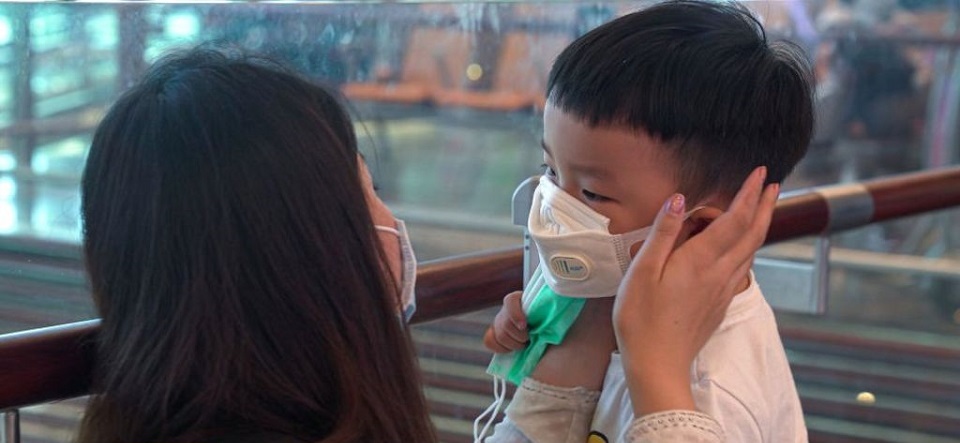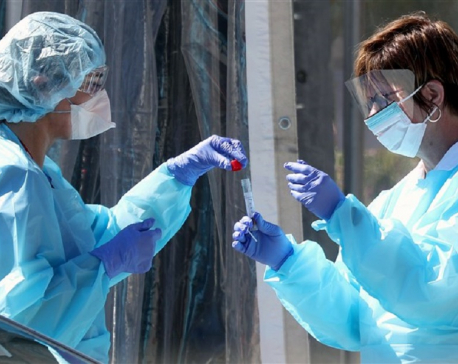
OR
What Nepal can learn from China
Published On: April 5, 2020 08:32 AM NPT By: Praveen Kumar Yadav and Xian Yaolong

More from Author
Chinese efforts in bringing the pandemic under control have been widely appreciated. Can China’s model be replicable for Nepal?
On Weibo, a Twitter-like platform in China, netizens are criticizing the countries with increasing cases of coronavirus for not following China’s containment strategy. Although Beijing was blamed for its cover-up two months ago, the number of confirmed COVID-19 positive cases in China has fallen dramatically and even zero cases have been reported for many days. People in most parts of China are getting back to their normal life while the rest of the world, including Nepal, is experiencing the opposite trend as the coronavirus spreads. As of now, Nepal has reported six confirmed positive cases. All the infected are the Nepalis who returned from foreign countries: China, France, UAE, and Belgium. To contain the spread of the virus, Nepal has imposed nationwide lockdown (now in its second week). Though China was widely criticized in the beginning, now Chinese efforts in bringing the pandemic under control have been widely appreciated. Can China’s model be replicable for Nepal?
On January 23, Wuhan and 15 other cities in Hubei province adopted the extreme lockdown to contain the virus. Airplanes and trains were suspended, and roads were blocked. Soon after, the Wuhan-style measures were introduced to many Chinese cities. Citizens were asked to stay at home and venture out only to buy food or medical help.
Research from the Chinese University of Hong Kong showed that infections would have been 64.8 percent higher in Chinese cities outside Hubei, and 52.6 percent higher in the cities of the province, except Wuhan, if the government had not imposed extreme lockdown. Chinese authorities recommended wearing face masks since the start of the coronavirus outbreak. Anyone who went out without wearing a mask was not allowed to enter any public area and could even be arrested. However, the official advice from the World Health Organization suggests only two types of people should wear masks: those who are sick and show symptoms, and those who are caring for people who are suspected to have the coronavirus. South Korea, Japan, and Vietnam are encouraging people to wear masks.
China’s experience in combating the virus has also highlighted the risk of family transmission in case the hospitals run out of beds. To alleviate the shortage of beds in hospitals in Hubei, the government in February decided to transform conference venues and sports stadiums and other public facilities into temporary hospitals, which accommodated the patients with milder symptoms. Within a month, more than 12,000 patients were cured in 16 such facilities. This greatly eased the pressure on the local health system.
With these measures, China has been able to overcome the threat at the moment. Lockdown has been lifted and life is getting back to normal. In many parts, however, people have to show their health QR code before entering an office or public facility. This code indicates whether someone is at risk of having coronavirus. Once the name and national identity number and registration of facial recognition are entered, the users can obtain their codes with green, yellow or red color on their Alipay or WeChat. A green code shows the user is not under quarantine and can move freely, but those with yellow and red codes need to quarantine themselves at home or undergo supervised quarantine respectively. China has taken advantage of its digital prowess to curb the spread of infection.
All these measures helped the country to combat the epidemic. Given the limited capacity of Nepal’s health facilities, technology, and resources, it may not be possible for Nepal to replicate all of the measures China took. But Nepal needs to continue with lockdown strategy, social and physical distancing, early diagnosis, early isolation, and early treatment. For Nepal, the fact that not more than six persons have been tested positive and there has been no fatality is itself a positive sign. But Nepal is failing on early diagnosis, early isolation and early treatment. This could prove to be dangerous for the country in the days to come.
Praveen Kumar Yadav writes on politics, human rights, and development. Xian Yaolong is an
independent researcher on Chinese politics, foreign policy, and human rights
You May Like This

Nepal and Modern World’s Biggest Challenge
Climate change has emerged as the gravest and most formidable challenge facing our modern world. Its catastrophic repercussions extend far... Read More...

Protect frontline healthcare workers
There has been a lot of discussion and news about shortages of Personal Protective Equipment (PPE) not only in Nepal... Read More...

Test, test, test
On January 25, when WHO reported a total of 1,320 confirmed cases globally for disease the outbreak caused by novel... Read More...

Just In
- World Malaria Day: Foreign returnees more susceptible to the vector-borne disease
- MoEST seeks EC’s help in identifying teachers linked to political parties
- 70 community and national forests affected by fire in Parbat till Wednesday
- NEPSE loses 3.24 points, while daily turnover inclines to Rs 2.36 billion
- Pak Embassy awards scholarships to 180 Nepali students
- President Paudel approves mobilization of army personnel for by-elections security
- Bhajang and Ilam by-elections: 69 polling stations classified as ‘highly sensitive’
- Karnali CM Kandel secures vote of confidence



















Leave A Comment